Are you a Quiet Speculation member?
If not, now is a perfect time to join up! Our powerful tools, breaking-news analysis, and exclusive Discord channel will make sure you stay up to date and ahead of the curve.
May is here and that means we are a few weeks closer to Modern Masters 2015, a month closer to the sweet GP blitz of June, and ready for another metagame update from Modern Nexus. My last metagame update, covering the 3/1-4/1 period, saw subtle metagame changes including downticks in Abzan, Twin, and Burn, the beginning of Grixis Delver's rise to glory, and a few predictions about what was coming on the Modern horizon.
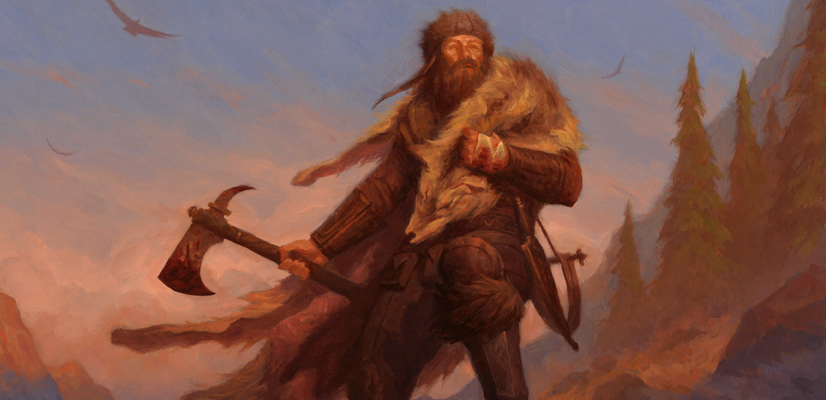
Although we still haven't had any GP-style Modern events since then, this metagame update is much more significant than my last one. Looking at the Top Decks page, we see a new tier 1 deck, an explosion in a tier 2 deck's popularity, and some major drops in some of the format's longtime tier 1 staples. This is about as exciting as it gets for a metagame update in a month without a Grand Prix.
[wp_ad_camp_1]
Top 10 Decks and Trends
We've had some big movement in our top 10 decks over the past month. TCG States and SCG States both happened in early April, as did the Dragons of Tarkir legalization. The end result was about as big a Modern metagame shakeup as we could expect for a nonrotating format during the offseason. Here are the top 10 decks as of this update.
| Deck name | Overall rank (3/1 - 4/1) | Overall Metagame % | MTGO % | Paper % | Major Event Day 2 % |
|---|---|---|---|---|---|
| UR Twin | 1 | 9.2% | 8.1% | 9.1% | 10.5% |
| Burn | 2 | 9.2% | 9% | 8.7% | 9.9% |
| Abzan | 3 | 9% | 4.9% | 9.1% | 12.9% |
| Affinity | 4 | 7.1% | 6.9% | 8.8% | 5.5% |
| Grixis Delver | 5 | 4.8% | 8.4% | 2.5% | 3.5% |
| Infect | 6 | 4.5% | 2.1% | 5% | 6.5% |
| Jund | 7 | 4.1% | 3.6% | 3.8% | 5% |
| RG Tron | 8 | 3.1% | 3% | 3.1% | 3.1% |
| Amulet Bloom | 9 | 2.9% | 4.1% | 2.1% | 2.3% |
| Merfolk | 10 | 2.6% | 3.5% | 4.2% | 0% |
Quick data note: you will notice the major paper event prevalences have changed. This is because we are now 2+ months out from the last major event in February. As a result of this, I have started to apply an adjustment to those numbers based on the deck's prevalence in the metagame. The new major event column reflects an average between the old value and the new MTGO/Paper share.
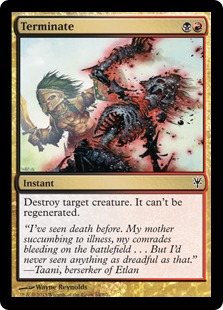 It's Modern as we always knew it... plus Grixis Delver. Grixis Delver's rise, which I discuss in greater depth in another article, is one of the most interesting trends I have seen in Modern since the format started in 2011. It is not that rare for a new deck to explode on the scene because a new card was printed. One need only look to Treasure Cruise to see that in action. It's also not that rare for a deck to explode in popularity after winning a GP or getting some high-profile pro coverage. But Grixis Delver has exploded without either of those preconditions. It's not like this card even got anything new in DTK. And it wasn't as if any pros picked up the deck and started trumpeting its power. This was a pretty bottom-up, independently-innovated, MTGO "crowdsourced" deck that went from zero to hero in just 1-2 months. It's now over 8% of the MTGO metagame and the second most-played deck behind Burn. This is a testament to how strong the deck is. Cards like Terminate, Tasigur, and Gurmag Angler have made a big difference in this current metagame, and Grixis Delver has really taken advantage of its positioning in the past months.
It's Modern as we always knew it... plus Grixis Delver. Grixis Delver's rise, which I discuss in greater depth in another article, is one of the most interesting trends I have seen in Modern since the format started in 2011. It is not that rare for a new deck to explode on the scene because a new card was printed. One need only look to Treasure Cruise to see that in action. It's also not that rare for a deck to explode in popularity after winning a GP or getting some high-profile pro coverage. But Grixis Delver has exploded without either of those preconditions. It's not like this card even got anything new in DTK. And it wasn't as if any pros picked up the deck and started trumpeting its power. This was a pretty bottom-up, independently-innovated, MTGO "crowdsourced" deck that went from zero to hero in just 1-2 months. It's now over 8% of the MTGO metagame and the second most-played deck behind Burn. This is a testament to how strong the deck is. Cards like Terminate, Tasigur, and Gurmag Angler have made a big difference in this current metagame, and Grixis Delver has really taken advantage of its positioning in the past months.
The other big Modern decks are basically the same, although Infect continues to decline from its earlier glory. This shift makes perfect sense: more players understand the deck's weaknesses, and more players are moving to decks like Grixis Delver (and decks with Bolt) that have stronger Infect matchups. In fact, ALL of the big decks declined from their 3/1-4/1 prevalences to now. This movement is made clearer when we look at the different data periods side by side and how metagame shares have changed from period to period.
| Deck name | Ranking (4/1-5/1) | Meta% (2/16-3/16) | Meta% (3/1-4/1) | Meta% (4/1-5/1) | %change (from last) |
|---|---|---|---|---|---|
| UR Twin | 1 | 12.3% | 11.8% | 9.2% | -2.8% |
| Burn | 2 | 10.6% | 10.2% | 9.2% | -1% |
| Abzan | 3 | 13.4% | 13.2% | 9% | -4.2% |
| Affinity | 4 | 7.8% | 7% | 7.1% | +.1% |
| Grixis Delver | 5 | 1% | 1.9% | 4.8% | +2.9% |
| Infect | 6 | 7% | 6% | 4.5% | -1.5% |
| Jund | 8 | 2.3% | 4.2% | 4.1% | -.1% |
| RG Tron | 9 | 2.9% | 3% | 3.1% | +.1% |
| Amulet Bloom | 11 | 2.7% | 2.7% | 2.9% | +.2% |
| Merfolk | 10 | 3.3% | 2.9% | 2.6% | -.3% |
| Abzan Liege | 7 | 3.3% | 3.1% | 2.5% | -.6% |
 The last article showcased a relatively stable metagame. This time, we see a metagame that is pretty far from stable. All three of the biggest decks in Modern took a pretty serious hit to their shares, with Abzan falling a massive 4.2% in the dataset. Although this makes sense as more players try to metagame against the format's well-known best decks, it's still interesting to see these kings dethroned. I didn't think I would ever see Twin fall below 10% in any period of time barring some insane new cards (poor TC). On that note, we actually don't see a single deck here with >10% of the metagame. That's extremely rare in Modern. Rarer still is that the only deck in the top 10 to see any sizable gains was Grixis Delver. Basically every other deck fell a few points or stayed right where it was in March-April. Abzan Liege is the big loser here, falling out of the top 10 for the first time since the deck debuted. Given the fall of the deck this deck was designed to beat, this trend makes a lot of sense.
The last article showcased a relatively stable metagame. This time, we see a metagame that is pretty far from stable. All three of the biggest decks in Modern took a pretty serious hit to their shares, with Abzan falling a massive 4.2% in the dataset. Although this makes sense as more players try to metagame against the format's well-known best decks, it's still interesting to see these kings dethroned. I didn't think I would ever see Twin fall below 10% in any period of time barring some insane new cards (poor TC). On that note, we actually don't see a single deck here with >10% of the metagame. That's extremely rare in Modern. Rarer still is that the only deck in the top 10 to see any sizable gains was Grixis Delver. Basically every other deck fell a few points or stayed right where it was in March-April. Abzan Liege is the big loser here, falling out of the top 10 for the first time since the deck debuted. Given the fall of the deck this deck was designed to beat, this trend makes a lot of sense.
All of that said, there's a very important metagame condition underlying these changes that we need to be aware of. We are going on month two without a major Modern paper event, and that has big implications for the Modern metagame. In short, no one knows what's "good" anymore. We haven't had big events to "prove" it, or at least to steer people to certain decks. There also isn't a lot of incentive to just stick with some top-tier "best deck" like Abzan and Twin because the events have much lower-stakes. There's a lot of incentive, however, to jump around archetypes and try to figure out new ideas and play new decks. As a result of this, the metagame distribution is normalizing more than we would ordinarily see from metagame period to metagame period. In the last two updates, the top 10-11 decks made up about 66% of the format both times. Today, they only make up 59%, with that remaining 7% distributed across a bunch of new decks in lower tiers. This is only surprising when you forget about the lack of major Modern events.
Tier 1 and Tier 2 Decks
Tier 1 decks represent the most-played decks in the format. Although these decks are not necessarily those with the highest win rates (see my most recent article on win rates here), they are definitely decks with above-average win rates in a large sample of games. These decks always perform and have fairly low variance in how well they can do at events. You can safely expect these decks to show up at tournaments, and safely expect do pretty well with them at events, even in unknown metagames. In this most recent update, we have made one addition to tier 1 based on data from the past month. You can see more about how decks get tiered on our Top Decks page.
| Deck name | Overall Metagame % | MTGO % | Paper % | Major Event Day 2 % |
|---|---|---|---|---|
| UR Twin | 9.2% | 8.1% | 9.1% | 10.5% |
| Burn | 9.2% | 9% | 8.7% | 9.9% |
| Abzan | 9% | 4.9% | 9.1% | 12.9% |
| Affinity | 7.1% | 6.9% | 8.8% | 5.5% |
| Infect | 4.5% | 2.1% | 5% | 3.5% |
| Jund | 4.1% | 3.6% | 3.8% | 5% |
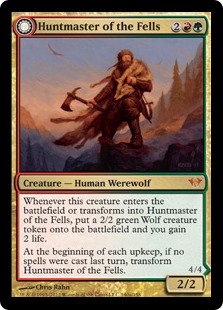 The biggest things happening in tier 1 are the return of Jund (yay!) and the absence of Grixis Delver (whaaat?). We'll talk about why Grixis Delver doesn't make the cut in a moment, but first let's focus on Jund. From a purely quantitative perspective, Jund sneaks into tier 1 not on any single metric, but rather on its consistent showings. Of all the decks that weren't already tier 1, Jund was the only deck to have success at our last major paper event (SCG Baltimore), and to enjoy consistent metagame gains since then. If Jund was showing up at events like SCG Baltimore before it started getting bigger online and in paper, it should be an even better choice today now that it has proven itself a bit more. I admit that if we had one of those June GPs tomorrow, Jund might not be there. But in the absence of those major paper events, our adjusted "major event day 2 %" column shows that Jund is still doing quite well in the format. This makes sense from a more experience-based perspective too. Abzan is falling and it stands to reason that another BGx deck will rise to takes its place. Jund has a better Burn matchup than Abzan, as well as a better Infect matchup. In a Burn dominated metagame, this is one reason we are seeing more Jund today than before, and I expect that number to rise as long as Burn keeps where it is.
The biggest things happening in tier 1 are the return of Jund (yay!) and the absence of Grixis Delver (whaaat?). We'll talk about why Grixis Delver doesn't make the cut in a moment, but first let's focus on Jund. From a purely quantitative perspective, Jund sneaks into tier 1 not on any single metric, but rather on its consistent showings. Of all the decks that weren't already tier 1, Jund was the only deck to have success at our last major paper event (SCG Baltimore), and to enjoy consistent metagame gains since then. If Jund was showing up at events like SCG Baltimore before it started getting bigger online and in paper, it should be an even better choice today now that it has proven itself a bit more. I admit that if we had one of those June GPs tomorrow, Jund might not be there. But in the absence of those major paper events, our adjusted "major event day 2 %" column shows that Jund is still doing quite well in the format. This makes sense from a more experience-based perspective too. Abzan is falling and it stands to reason that another BGx deck will rise to takes its place. Jund has a better Burn matchup than Abzan, as well as a better Infect matchup. In a Burn dominated metagame, this is one reason we are seeing more Jund today than before, and I expect that number to rise as long as Burn keeps where it is.
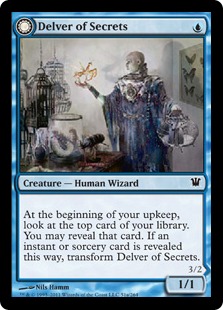 Now let's talk about Grixis Delver. It might come as a surprise that a deck with a higher overall metagame share than Jund is not yet tier 1, especially given how much I personally love the deck and have been playing up its potential for week. But a closer look at those numbers gives some sense as to why the deck isn't quite tier 1 yet. For one, Grixis Delver is disproportionately driven by MTGO success. It's 2.5% of the paper metagame and...8.4% (!!) of the MTGO metagame. That's a six percentage point difference between the two, or an almost 300%-400% difference as a percent. When a deck has that kind of wild imbalance between MTGO and paper, we need to pause and ask why. It's not like Grixis Delver hasn't had a chance to shine in paper. TCG and SCG States saw basically 100 events in early April, and although Grixis Delver definitely made showings, it wasn't the same kind of commanding performance we saw on MTGO. So it's too early to responsibly call the deck tier 1, even though I still think it is going to get there by the summer. The second reason Grixis Delver I don't want to take the risk and call the deck tier 1 is because the imbalance is on the MTGO side of its numbers, not the paper side. When a deck has a lot of paper success, it's often just a matter of time before that translates to MTGO. But the reverse is not always true. With 4 round structures, different gameplay, and a different economy, MTGO has enough unique characteristics that we can easily envision a deck succeeding there and not translating that to a GP. So we need to play the tiering conservatively and keep Grixis Delver in tier 2 for now.
Now let's talk about Grixis Delver. It might come as a surprise that a deck with a higher overall metagame share than Jund is not yet tier 1, especially given how much I personally love the deck and have been playing up its potential for week. But a closer look at those numbers gives some sense as to why the deck isn't quite tier 1 yet. For one, Grixis Delver is disproportionately driven by MTGO success. It's 2.5% of the paper metagame and...8.4% (!!) of the MTGO metagame. That's a six percentage point difference between the two, or an almost 300%-400% difference as a percent. When a deck has that kind of wild imbalance between MTGO and paper, we need to pause and ask why. It's not like Grixis Delver hasn't had a chance to shine in paper. TCG and SCG States saw basically 100 events in early April, and although Grixis Delver definitely made showings, it wasn't the same kind of commanding performance we saw on MTGO. So it's too early to responsibly call the deck tier 1, even though I still think it is going to get there by the summer. The second reason Grixis Delver I don't want to take the risk and call the deck tier 1 is because the imbalance is on the MTGO side of its numbers, not the paper side. When a deck has a lot of paper success, it's often just a matter of time before that translates to MTGO. But the reverse is not always true. With 4 round structures, different gameplay, and a different economy, MTGO has enough unique characteristics that we can easily envision a deck succeeding there and not translating that to a GP. So we need to play the tiering conservatively and keep Grixis Delver in tier 2 for now.
Speaking of which, here's our current tier 2 over the 4/1-5/1 period. Some interesting new faces show up in this update, along with many old ones.
| Deck name | Overall Metagame % | MTGO % | Paper % | Major Event Day 2 % |
|---|---|---|---|---|
| Grixis Delver | 4.8% | 8.4% | 2.5% | 3.5% |
| RG Tron | 3.1% | 3% | 3.1% | 3.1% |
| Amulet Bloom | 2.9% | 4.1% | 2.1% | 2.3% |
| Merfolk | 2.6% | 3.5% | 4.2% | 0% |
| Abzan Liege | 2.5% | 2.8% | 2% | 2.8% |
| Scapeshift | 2.3% | 3% | 1.8% | 2% |
| UWR Midrange | 1.7% | 1.4% | 1.9% | 1.6% |
| Bogles | 1.6% | 1.6% | 1% | 2.2% |
| UWR Control | 1.4% | .9% | 1.9% | 1.5% |
| Temur Twin | 1.3% | 1% | 1.4% | 1.4% |
| Grixis Twin | 1.3% | .8% | 1.1% | 2% |
| Esper Mentor | 1% | 1.7% | 1.2% | 0% |
| Blue/Temur Moon | .9% | .4% | .4% | 1.8% |
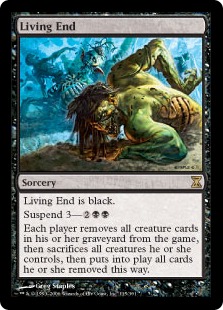 Comparing the table to last month's update, we see Living End falling out of tier 2 and Esper Mentor and Grixis Twin taking its place. Living End just had a very disappointing showing at the TCG/SCG states events, and wasn't making a lot of headway in MTGO either. That said, some players (about .2%-.3% of both metagames) have shifted over to Living Twin/Twinning End, a hybrid Splinter Twin/Living End deck that started making some showings in late March and early April (thank Gerry T and LSV for the boost). So it's not as if the deck has totally disappeared. Meanwhile, Esper Mentor continues to be a strong deck, although Grixis Delver has definitely surpassed it as the neat new strategy of choice. Esper Mentor is more midrangey anyway, and would be better suited to a metagame with more Abzan than we currently see (Souls does serious work in that matchup). Grixis Twin also made a number of high profile appearances over the States events, further solidifying Grixis colors as strong choices for Modern and looking to compete with Temur Twin for the tempo Twin deck of choice. Also note the return of UWR Midrange after a brief trip out of tier 2 last month.
Comparing the table to last month's update, we see Living End falling out of tier 2 and Esper Mentor and Grixis Twin taking its place. Living End just had a very disappointing showing at the TCG/SCG states events, and wasn't making a lot of headway in MTGO either. That said, some players (about .2%-.3% of both metagames) have shifted over to Living Twin/Twinning End, a hybrid Splinter Twin/Living End deck that started making some showings in late March and early April (thank Gerry T and LSV for the boost). So it's not as if the deck has totally disappeared. Meanwhile, Esper Mentor continues to be a strong deck, although Grixis Delver has definitely surpassed it as the neat new strategy of choice. Esper Mentor is more midrangey anyway, and would be better suited to a metagame with more Abzan than we currently see (Souls does serious work in that matchup). Grixis Twin also made a number of high profile appearances over the States events, further solidifying Grixis colors as strong choices for Modern and looking to compete with Temur Twin for the tempo Twin deck of choice. Also note the return of UWR Midrange after a brief trip out of tier 2 last month.
Most of the other decks in tier 2 retained their position from the previous update. Apart from Grixis Delver, the only deck worth special notice is Amulet Bloom, which enjoyed some additional paper success during TCG/SCG States. That said, it still isn't quite the top-tier monster where you would start to worry about undue banning attention (I'm sure people will worry anyway). If that prevalence keeps rising, however, its win rate is going to start looking even scarier than it is already.
Metagame Predictions
The 5/1 - 6/1 period promises to be much less eventful than 4/1 - 5/1, with Modern Masters 2015 Limited taking the spotlight over Constructed. It's still more than 5-6 weeks until our next big Modern GP, so don't expect to see that many changes in our next update. That doesn't mean we can't make some predictions about what might or might not happen, nor does it mean we can't check back in on predictions I made in the last article.
- Jund on the rise? Yes!
Here's the thing: It wasn't so much that Jund rose during the update. Rather, a bunch of other tier 1 decks fell while Jund stayed about the same. This made room for Jund to rise into tier 1 based on its past performance. I expect this deck to stay there for a while because Bolt is just really dang good, people are over-metagamed against Abzan, and there will always be room for some kind of BGx deck to succeed.
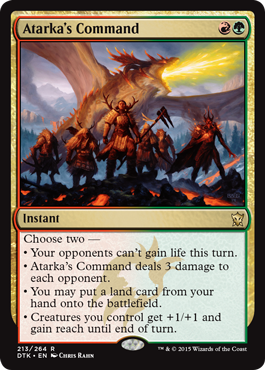 Affinity replacing Burn? Nope.
Affinity replacing Burn? Nope.
This was a sad one for me. We had some promising pre-trends that suggested Affinity would replace Burn as the format's premier aggro deck, but this was not to be. There were two problems here. The first was Atarka's Command, which is now a staple of most Burn strategies and has made up for some of its weaknesses that Burn suffered in March. Meanwhile, Affinity didn't gain much, and although it has maintained a strong paper metagame share, its MTGO share has really dropped. This leads to the second problem which is Grixis Delver. Burn has a great Grixis Delver matchup. Affinity? Not so much. With Grixis Delver all over MTGO, it makes sense that Affinity has taken an online hit while Burn has soldiered on.
- Collected Company homeless? Sort of...
On the one hand, Company has found a home in the so-called Podless Pod style deck that recently won SCG Portland. We have seen this deck in a number of other paper events over the past few months and it's already at about 2.5% of the paper metagame, and I expect this to be Company's eventual home. So why isn't it tier 2? For some reason, none of this has migrated to MTGO. On MTGO, the Company home of choice is Elves, a deck that absolutely exploded from about 0% for years to 1.8% in the past month. I think Podless Pod will probably win this out in the end, with the GPs sealing the deal, but right now, we are in a situation where MTGO and paper are split on which deck is better. It's going to take a major event to sort that out.
So we were 1.5 for 3 last time, which really isn't that great. I'm bummed by the Affinity situation, but totally see where I went wrong with that one. And as they say, hindsight is always 20/20. Let's try again with two new predictions. I'm only doing two this time around because I honestly think this next month will be a bit slow (that's a prediction in itself!) and don't want to overstate a case.
- Grixis Delver will still be a top 2 MTGO deck
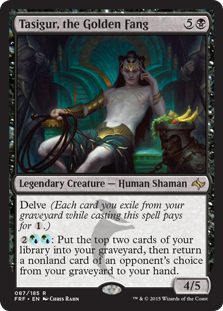 This deck needs a bit more time to attain tier 1 status, but it's position on MTGO is all but assured at this point. The only thing that's going to kick Grixis Delver down a few notches is an underwhelming GP performance, and the deck is just one T8 away from totally exploding. I expect to see Grixis Delver's numbers remain steady or even rise in the next month as more people try out the deck and see what all the noise is about. Hint: that Twin matchup is just as awesome in practice as it sounds on paper. This might seem like a "safe" prediction, but sometimes Modern players can get caught up in a craze that overrepresents the true viability of a deck. This happened a lot during the early days of KTK Modern, when Burn was about 20% of the metagame for a month before crashing back down to where it belonged. I don't think this is the case with Grixis Delver and I think Modern players are going to realize this deck is the real deal.
This deck needs a bit more time to attain tier 1 status, but it's position on MTGO is all but assured at this point. The only thing that's going to kick Grixis Delver down a few notches is an underwhelming GP performance, and the deck is just one T8 away from totally exploding. I expect to see Grixis Delver's numbers remain steady or even rise in the next month as more people try out the deck and see what all the noise is about. Hint: that Twin matchup is just as awesome in practice as it sounds on paper. This might seem like a "safe" prediction, but sometimes Modern players can get caught up in a craze that overrepresents the true viability of a deck. This happened a lot during the early days of KTK Modern, when Burn was about 20% of the metagame for a month before crashing back down to where it belonged. I don't think this is the case with Grixis Delver and I think Modern players are going to realize this deck is the real deal.
- Podless Pod will become tier 2
 I still think we need a GP to really decide the Collected Company issue, but it's much easier for decks to transition from paper to MTGO than MTGO to paper. We have seen this before and I think we will see it again with Podless Pod. The deck is definitely there with its paper prevalence. All it needs are a few sustained showings on MTGO to get to that 1%-2% threshold needed for tier 2 status. I also think this is the "best" of the different Company-based decks, and MTGO players are going to figure this out sooner or later. Expect to see this deck follow Esper Mentor in its transition from paper to MTGO, at which point it will have enough showings to justify tier 2 status. Besides, this deck is basically a [mtg_card]Birthing Pod[/mtg_deck], or at least the fairer version thereof. Never bet against a Birthing Pod deck, even if it is a less broken variation.
I still think we need a GP to really decide the Collected Company issue, but it's much easier for decks to transition from paper to MTGO than MTGO to paper. We have seen this before and I think we will see it again with Podless Pod. The deck is definitely there with its paper prevalence. All it needs are a few sustained showings on MTGO to get to that 1%-2% threshold needed for tier 2 status. I also think this is the "best" of the different Company-based decks, and MTGO players are going to figure this out sooner or later. Expect to see this deck follow Esper Mentor in its transition from paper to MTGO, at which point it will have enough showings to justify tier 2 status. Besides, this deck is basically a [mtg_card]Birthing Pod[/mtg_deck], or at least the fairer version thereof. Never bet against a Birthing Pod deck, even if it is a less broken variation.
As a final metagame note before we end today, you can now find the metagame tables in this article presented on the Top Decks page. I love the Google spreadsheet we have embedded, but acknowledge that it displays badly on mobile screens and can be a bit complicated. So these new tables should help people access the metagame information and overall make it more useful.





Good to see Jund again. Grinding since 2012 and still going.
GET ‘EM BOLT! I expect to see a lot of Burn which means I also expect to see a lot less Abzan. Something has to fill the BGx gap in that metagame, and Jund can rise to the occasion.
What exactly is it you think make jund better against burn? Abzan has rhinos and timely reinforcement to combat the life loss.
You can’t rely on this kind of turn 3-4 “burst” lifegain against Burn. It was risky even BEFORE Atarka’s Command, and now it’s just stupid. You can now count on Burn having at least 6-8 Cracks/Commands in games 2/3, and even as many as 7 in game 1. This means your turn 3-4 lifegain doesn’t do anything to save you. It’s much more important to answer those early creatures as efficiently as possible. Jund can do this with Bolt. Abzan has to do this with Path (which accelerates Burn into a turn 2 Eidolon/Bolt combo), or AD (which doesn’t trade at parity). Moreover, Abzan’s manabase is very painful. Jund can go turn 1 Cliffs into turn 2 Bolt to both answer a Guide at parity AND to take 0 damage in the process. Playlines like this are what gives Jund a much better Burn matchup than Abzan had.
Great article, as always. I feel like the biggest factor in the metagame shifts all have to do with 3 key cards: Terminate, bolt, and abrupt decay. I think the biggest reason why we are seeing such drastic meta game changes is the fact that abrupt decay and bolt aren’t the hyper-efficient catchalls that they once were in modern. Because of the printing of tasigur, rhino, and other delve cards, terminate is now the king of modern removal. I think that this is a big factor in the rise jund and grixis; access to modern’s best removal spell at the moment. Too many decks are outgrowing bolts and decay which makes them less of the auto-include 4 of they used to be (although if your playing those colors, they still are an auto include 4 of to me, 8 of if you’re jund). Also I think a big shift is when the meta is young and new and shaken up (post pod/TC bans for example) the modern meta game has a tendency to do what I call “junding”. In an unknown meta, it’s usually safe to just sleeve up some jund and ride that to 50/50 matchup success. That’s when junk comes in, and jams lingering souls to out-grind the BGx mirror. Then your infect/affinity/aggro-flavor-of-the-week deck comes in to try to pray on your now bolt-less opponent, to the point where jund is now favored again (the spot we are in now). To not consider jund a tier 1 deck in modern at any given time is just naive, even if it’s not in flavor at the moment, it’s still one of the most consistent decks in the meta at any given time. When bolt becomes bad, terminate becomes great, and that’s the spot we’re in now. The meta is very cyclical and even with the new faces, GBx decks have such a vast card pool to chose from that its a very easy deck to tune to the meta. Aggro heavy? Play jund. Control heavy? Play Junk. I just think that right now terminate is outshining all the other removal in modern at the moment and that is the reason for the rise of BR strategies.
I don’t think that Terminate is better than Path to Exile right now.
Is it though? I’d agree that past turn 3 it is, but before that I’d say definitely not. Against most aggro decks its fine, but do you really want to be giving grixis delver/ twin an extra land to be working with? Probably not. I think it is an amazing card and a defining card of the format, but it’s more of a “necessary evil” type of card.
I’m not sure if I agree with your assessment about “junding”. In fact, I’m not sure if I agree with your assessment of how the metagames shift from different BGx decks to other BGx decks. When DRS got banned back in January 2014, the metagame was split on whether to stick with Jund or jump to BG Rock. April through July saw the two decks pretty evenly matched in the metagame, with both at around 5.5%. But by September 2014, BG Rock and BGw Souls pulled out ahead. At that time, BGw Souls/BG Rock were collectively at about 6.5% while Jund dropped to 4.5% or so. And of course, the TC era of Modern saw the effective death of Jund, first to Delver and Burn, and then to Pod and Abzan. TC got banned and this didn’t change either. Abzan was clearly the deck of choice, because it had the power (i.e. Bloodbraid Rhino) that Jund lacked.
All of this is to say that Jund wasn’t nearly as consistent as your analysis comes across to me. The metagame has actually never “junded” since DRS died. If anything, it “rocked” or “souled” as players shifted away from Jund. Jund came back, yes, but it was less viable for a long time.
Part of this arises from how different people use different definitions for “tier 1”. For me, it’s a measure of prevalence more than anything else. There is a moderate correlation between prevalence and performance (an upcoming article will discuss this), but prevalence is the primary driver. In essence, tier 1 decks are the ones you can be almost sure to see at tournaments in a date range, and decks you can reasonably expect to perform. You can still play lower-tier decks that are good against the metagame, but those decks aren’t tier 1. And there are times when Jund is such a deck and NOT one of those megadecks.
So sorry, should of said “rocked” instead of “jund”. This is a joke right? (“The Rock” and “jund” share the same core, it happens to be the same core “junk” shares.) The meta never “souled” before rhino until it had first “junded”, or sorry “ROCKED”, because lingering souls is awesome in the mirror. And sure when DRS got banned people were TRYING oblitorater rock, and when that didnt pull enough weight switched back to jund. The printing of anger of the gods was the nail in the coffin because jund now had a trump card against pod. The printing of TC was the only time that BGx strategies were ever really “dead” in the meta. As long as the core of the deck is still legal (discard, goyfs, abrupt decay, lili) GBx will always be a deck you need to prepare for in the modern meta game, regardless of the 3rd color splash.
Excellent article and analysis. Thanks!
Exciting times in Modern, it seems – thanks for all of your hard work. That said, I’m surprised that a deck like Martyr Life/Soul Sisters hasn’t made a move in this meta, given how aggro-oriented it can be (and doubly so with a tough matchup like Infect in free-fall). Why do you think that is?
I’m also surprised by the fall of Living End for more or less the same reason (do we have any theories on why it did poorly on the SCG/TCGs?), though I fully expect Living Twin (or whatever we end up calling that deck) to pop up in its place and claim its meta share.
I like Soul Sisters a lot, but there are a few things I think keep it out of the top. The first is the lack of removal. If I’m entering unknown metagames, I want some high power removal. I’m thinking Terminate or Decay. Bolt or Electrolyze. Soul Sisters is just really light on removal. Taking that a step further, it’s light on interaction period. That can be good in some Modern decks that are doing really powerful proactive things (Burn, Infect, Amulet), but Soul Sisters doesn’t have a gameplan that is particularly powerful. It’s just gaining life and playing a bunch of life. So now we are playing a deck with bad interaction and fairly low power. This can be a turn off for Modern players who are trying to pick a deck. I think this is a little irrational, but I also see the merits to these kinds of objections.
I like the breakdowns, but I disagree with one thing–grixis delver retaining a top 2 MTGO status. I don’t personally play on MTGO, but I try to follow its metagame somewhat, and one thing that I’ve noticed is that it reacts very fluidly to its own metagame changes, and can fluctuate rapidly between certain decks. I’ve noticed when observing daily events and such that *often* you will have extreme prevalence of one deck (3 or 4x its metagame share) in an event, and then see it fall off rapidly and disappear for a few days or a week. Sometimes, this is because the deck has very few pilots; other times, its because someone copies a deck (Bahara’s RW D&T for example) and a bunch of people play it the next event or two after a successful stream, and then it falls off entirely when people misplay it and/or the metagame is already hostile to it. MTGO stats are different overall, but they swing wildly and I’ve noticed inbreeding from event to event, especially in standard if you watch 5 or 6 consecutive daily events in full (from a metagame perspective).
Yeah, we’ll have to see what happens. A big reason I made the prediction is because Grixis Delver IS that deck with consistent MTGO results. Even decks like Affinity, Twin, and Abzan don’t have that kind of consistency these days. But every daily I see, despite averaging about 30 4-0/3-1 players or so, still gets about 3-4 Grixis Delver. The deck would only need 2-3 lists per Daily to sustain that over time, and many dailies have three times that.
Of course, this needs to be revisited after the June GPs. Failure at those events would be a metagame share crash for Grixis Delver. Success would be the opposite.
As always, thorough, interesting and well-written analysis of the metagame!
I do wonder, is there a way to make the tables sortable by percentages? It would allow you to sort by the info you find most relevant(other than overall prevalence).
Hmm the tables should already be sortable by percent via the arrows at the top of each column. The table settings also confirm that they are sortable by visitors, so it should be working.